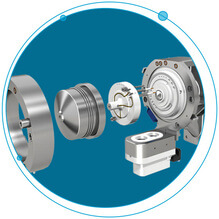 How do you safeguard human health and protect your reputation through meeting stringent global food and environmental safety standards?
How do you safeguard human health and protect your reputation through meeting stringent global food and environmental safety standards?
When it comes to testing food and environmental samples, the quality of your testing data is vital to your business. You need fast and accurate analytical techniques that help enable you to reliably identify and quantify hundreds of chemical contaminants and residues in a single run.
Liquid chromatographic techniques coupled with mass spectrometry (LC-MS) has become the method of choice, offering excellent levels of sensitivity and selectivity. It provides a robust and flexible solution, with high-quality data, which helps you meet maximum residue limits and achieve the lowest possible detection limits, at trace levels with the ultimate accuracy.
When You Need to Push the Limits Even Further
When testing for food and environmental contaminants, you often face analytical challenges that demand a more advanced level of selectivity. Some compounds can be troublesome to reproducibly detect due to complex matrices. These compounds may also be isomeric and so problematic to separate using conventional approaches. This is where your mass spec workflows could benefit from an additional level of separation.
SelexION® DMS Technology from SCIEX can deliver an orthogonal level of separation for your most challenging samples. Instead of returning to method development, it allows you to reduce background noise and eliminate interference from your sample, so you can separate highly similar compounds.
The Reliable Results and Fast Turnaround Times Your Lab Needs
SelexION is a small, planar mobility cell that can significantly help you increase analytical separation power. Coupled with a SCIEX LC-MS/MS system, it enables robust and reproducible detection of food or environmental contaminants.
- The introduction of chemical modifier adds a new dimension to selectivity and dramatically increases separation capacity
- Planar geometry results in high speed and minimal diffusion losses for maximum sensitivity and UHPLC compatibility
- Highly robust, reproducible and stable for use in regulated food and environmental testing
- Easy to maintain, and can be installed or removed in minutes with no need to break vacuum or use any tools
Do you want to know more? We thought you might, so we have developed some tech notes to support you in your quest to achieve highly selective and sensitive analyses in food and environmental testing:
- Increasing Selectivity and Confidence in Detection when Analyzing Phthalates by LC-MS/MS
- Improving the LC-MS/MS Selectivity of Triazole Derivative Metabolites with SCIEX SelexION Technology
- LC-MS/MS Analysis of Emerging Food Contaminants
- Rapid Characterization of Naphthenic Acids Using High-Resolution Accurate Mass MS and MS/MS with SelexION Differential Mobility Separation
When it comes to meeting regulatory demands and keeping our food and environment safe from pesticides and other contaminants, look no further than SelexION DMS Technology. Download the eBook and get access to these technical papers, and so much more. Find out about The Science Behind SelexION.
Differential Ion Mobility Technology and how SelexION Addresses Your Biggest Analytical Challenges.






 Contact Support
Contact Support
0 Comments